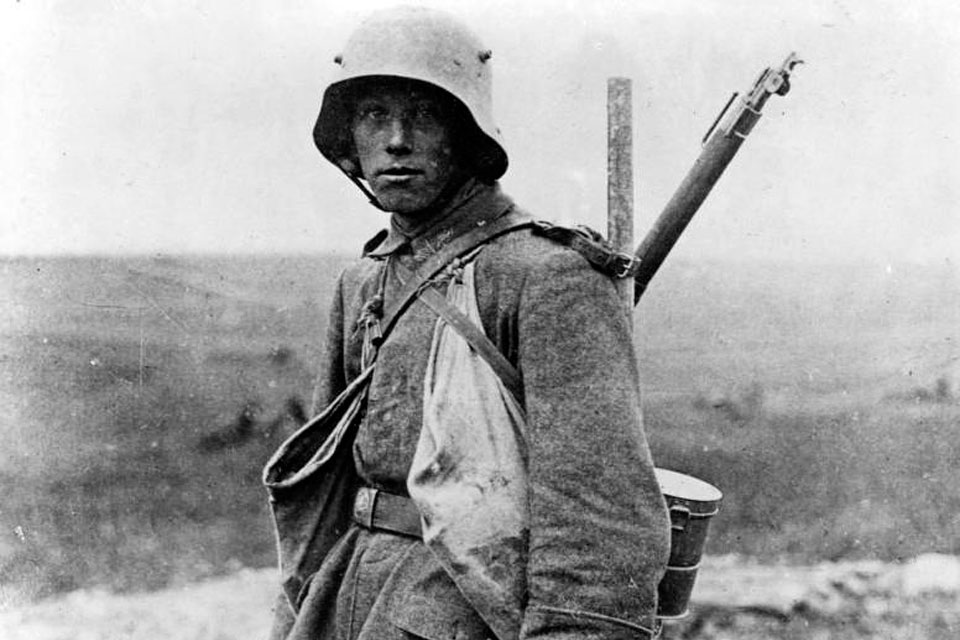All through the 1980s I worked for The Soviet Culture newspaper as a photo reporter in the Ukraine. In the summer time I always was summoned to Moscow where for two or three weeks I replaced photographers who were on summer leave. At that period of time Eugeny Khaldey was working for that newspaper. Luckily for him, it was the time when old men were not abandoned to their fate and he had an honorary lifetime job with “The Soviet Culture,” it was his deserved “distinguished retirement.” Khaldey was not doing anything for the editorial office, he just maintained his staff position and took his time doing his exhibitions. There were two exhibitions to speak of: “The Nürnberg Tribunal” and “Konstantin Simonov.” They traveled from city to city, and the author followed to attend the opening night. I was friends with Eugeny Ananievich, and it was back then, in the mid nineteen eighties, as I was sharing with him gorilka with chilly pepper (traditional spirit in the Ukraine, translator’s note), that I would bring him as a small treat, he acknowledged that “Soviet photographers didn’t photograph the war.”
It was then that Khaldei told me how he took his famous photograph “The Colours of Victory over the Reichstag.” By now that story has been published many times, but at that time it astounded me and even disappointed (staged shooting, colors made beforehand with a magnified sickle and hammer, pre-selected soldiers as models).
{“img”: “/wp-content/uploads/2015/05/marushenko_01.jpg”, “alt”: “Maruschenko”, “text”: “The Colours of Victory over Reichstag by Eugeny Khaldei”},
{“img”: “/wp-content/uploads/2015/05/9may_3.jpg”, “alt”: “Maruschenko”, “text”: “US Marine with M1 Carbine in Guam, Mariana Islands, 1 Jul 1944”},
{“img”: “/wp-content/uploads/2015/05/9may_2.jpg”, “alt”: “Maruschenko”, “text”: “Wehrmacht soldier.”},
{“img”: “/wp-content/uploads/2015/05/9may_1.jpg”, “alt”: “Maruschenko”, “text”: “U.S. Marines raising the American flag over Mount Suribachi, Iwo Jima, in February 1945.”},
{“img”: “/wp-content/uploads/2015/05/9may_5.jpg”, “alt”: “Maruschenko”, “text”: “Grumman TBF Avenger.”}
Probably at this point we need to remind ourselves of the fact that Soviet photography was subject to censorship on all stages — from preparation for shooting until publication. It was particularly strong in the totalitarian period, till the mid 1950s, when characters and stories were carefully selected and double-checked. Sometimes subjects of staged photo shoots were even obliged to change their clothes, e.g. factory machine operators had to put on new uniforms.
Photographers themselves were also subject to thorough control, in most cases assignments were only given to the most trustworthy party members. The most famous photographer of the pre-war time, “Stalin’s falcon” Alexander Rodchenko, was only photographing “the positive side of reality:” parades and marches, famous people, symbols of time and of the epoch. Even on his trips to the construction site of the White sea channel (Belomorkanal), that, as we all know, was built by prisoners, Rodchenko managed to get happy faces.
Then the war broke out. In the pre-internet time, we still managed to absorb a few names of Soviet war photographers: Dmitry Baltermants, Eugeny Khaldei, Max Alpert, Arkady Shaikhet and others. If we carefully look at their works (story, location, character), we will notice that there is very little frontline in them. A lot of pictures were taken in the rear or between battles. It is more like “behind the scenes of war.” Many works by Soviet photographers look more like propaganda posters (“The Grief” by Baltermants, “Commander” by Albert) than actual news footage.
{“img”: “/wp-content/uploads/2015/05/marushenko_cover01.jpg”, “alt”: “Maruschenko”, “text”: “Commander by Max Alpert.”}
{“img”: “/wp-content/uploads/2015/05/marushenko_03.jpg”, “alt”: “Maruschenko”, “text”: “Politruk by Arkady Shaikhet.”}
{“img”: “/wp-content/uploads/2015/05/marushenko_04.jpg”, “alt”: “Maruschenko”, “text”: “Grief by Dmitry Baltermants.”}
I didn’t mention Anatoly Sergeevich Garanin, one of the few people who photographed the war. Until the end of the 1980s his archive with unsorted negatives accumulated dust on his balcony. Garanin was famous as a photographer of Taganka Theatre (since its foundation until his death in 1990), he photographed Lyubimov and Vysotsky and did theatre exhibitions. But he never went back to the war theme. His works were unearthed by colleagues from Lithuanian photographers’ community who organised his first exhibition in 1987. Today Garanin’s photograph “Death of a Soldier by Rzhev” is among classics of the world war photography.
After the appearance of the internet we found out about other war authors, sometimes even anonymous. They are far more interesting and truthful than what the Soviet time had to offer. And Khaldei’s sad remark, “Soviet photographers didn’t photograph the war” now doesn’t sound so sad as it did before. It goes without saying that the world war photography gives a very accurate rendering of that time and its atmosphere. The classics of reportage fought through the war as ordinary soldiers, some of them were wounded or killed, but they managed to create amazing for their truth an realness images.
{“img”: “/wp-content/uploads/2015/05/marushenko_05.jpg”, “alt”: “Maruschenko”, “text”: “Anatoly Garanin’s photograph Death of a Soldier by Rzhev.”}
However, the reason why war photo archives of the former USSR cannot compete with the Western ones is not just the censorship. For Soviet soldiers on the frontline it was prohibited to own a camera, and that, in itself, ruled out appearance of spontaneous and hence truthful photography. But look at the German chronicles – a vast majority of soldiers are holding their own Leicas.
{“img”: “/wp-content/uploads/2015/05/9may_6.jpg”, “alt”: “Maruschenko”, “text”: “Wehrmach soldiers at a parade in Warsaw. October 5, 1939.”}
About the author: Viktor Maruschenko is a Ukrainian photographer, founder and director of his own school of photography. He’s been a participant in over 70 exhibitions in the Ukraine and abroad, including Biennale of Contemporary art in Venice (2001) and São Paolo (2004).





